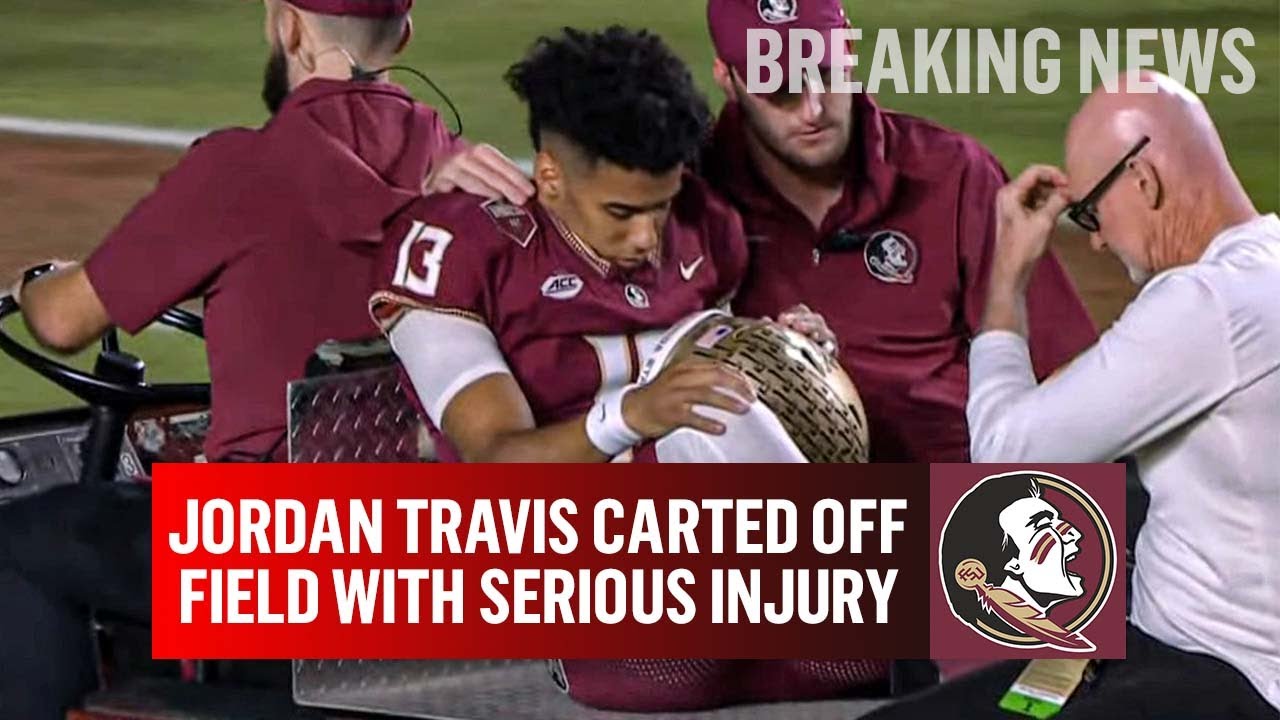Understanding the Jordan Travis Injury
Jordan Travis, the standout quarterback for the Florida State Seminoles, recently experienced an injury that has caught the attention of college football fans nationwide. As teams gear up for the postseason, the implications of Travis’s condition cannot be overstated. In this blog post, we will delve deep into the nature of his injury, the potential implications on his career, and how this situation reflects the broader challenges athletes face.
The Nature of the Injury
In a recent game, Travis was taken down during a critical play, leading to significant concerns about his health. Reports indicate that he suffered a leg injury that left him unable to continue. Initial assessments were alarming, prompting speculation about the duration of his recovery and whether he would be able to return to form for future games. Injuries of this nature can be particularly worrying for any athlete, as they can easily affect a player’s mobility and confidence.
Impact on Florida State Seminoles
The timing of Travis’s injury poses serious concerns for the Seminoles. As the season enters its final phase, the team has its sights set on a potential playoff run. Travis’s leadership and skill on the field have been instrumental in the team’s successes this season. Head coach Mike Norvell has expressed optimism about Travis’s recovery, but the uncertainty remains regarding how long the quarterback may be sidelined. The backup, if called upon, will need to step in and fill the large void Travis leaves, making the upcoming weeks pivotal for the team.
A Closer Look at Recovery
Recovery from injuries can vary significantly based on the severity and the treatment regimen followed. In Travis’s case, the medical staff will likely take a conservative approach to ensure that he fully recovers before returning to play. This means close monitoring and a structured rehabilitation program that focuses on restoring strength, mobility, and confidence.
Exploring College Football Injury Trends
Travis’s injury is part of a larger trend in college football where injuries impact player careers drastically. Recent studies indicate that the average time recovery for similar injuries can be anywhere from a few weeks to several months, depending on various factors. Athletes must navigate psychological barriers as well; the fear of re-injury can often hinder optimal performance even after the physical injury has healed.
What’s Next for Jordan Travis?
The immediate focus for Travis will be on recovery, but there is also a long-term perspective to consider. Young athletes today have higher visibility and expectations, which can amplify the pressure surrounding their return to play. Travis will need to strategize his comeback, considerations around practice, gameplay exposure, and even participation in conditioning drills are crucial for a safe and effective return.
Conclusion
Jordan Travis’s injury serves as a reminder of the unpredictability of sports and the fine line athletes walk between success and adversity. As fans and supporters wait for updates on his condition, it’s crucial to understand the deeper implications of injuries on athletes’ careers. The journey of recovery is as much about physical rehabilitation as it is about mental strength.
This situation also highlights the need for universities and professional organizations to continue investing in athlete health programs. Providing comprehensive care and support systems will help mitigate risks and enhance players’ longevity in the sport.
Stay Updated
For the latest updates on Jordan Travis and his recovery journey, be sure to keep an eye on official Seminoles publications and sports news channels. Knowledge is power, especially in understanding how student-athletes navigate their challenging but rewarding careers.








